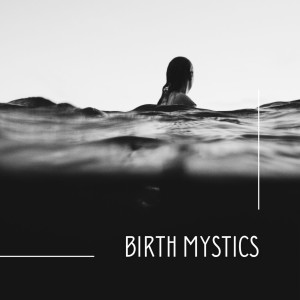
You've likely been taught that birth (and life) is a lot like a maze—having to make the "right" choices in order to achieve a "good" birth. But what if there's another template for giving birth (and living) that removes those vocabulary words entirely and sets you up for peace, clarity, and empowerment?
The whole point of a maze is to find the way out, typically as quickly as possible. And yet, it's designed to frustrate and mislead you, with seemingly endless crossroads. Decision-making looks like "right or left" which quickly devolves into "right or wrong." You know you've taken a wrong turn if you hit a dead-end and have to back-track. That's typically what leads to anxiety, depression, and self-criticism. Sometimes you blame yourself, other times you blame the maze, or maybe even other circumstances. You get stuck in the "if only" game, wishing you could go back to that crossroads and make a different choice that would yield different results. Much of birth (and life) trauma happens here.
The goal of a labyrinth is quite different. Instead of trying to "escape" or "get out" you're seeking to go deeper and deeper into the heart and center. There is only one path, and so the decision-making changes. Instead of asking "right or wrong" you're asked—will I keep going? Just because there's one path, that doesn't mean it's all going to be smooth, perfect, beautiful, and ideal. It's not that that ONE path is ALL right—it's a fusion of everything. It's prickly, soft, light, dark, heavy, quiet, loud, smooth all mixed into one. Instead of asking us to "choose the right," labyrinths teach us to "choose the ripe," like a succulent fruit falling from the vine. When you choose that ripened fruit, the path unfolds before you. You can proclaim, "This is the choice that I made. So be it." That is the path.
If you don't want to give birth in a maze you can choose different rules. Consider an example. During labor, the nurse suggests breaking your waters. Is this a "right or wrong" scenario? Start by checking in with your brain—seek information, statistics, facts. Then, check in with your unique situation—where am I at, what is my body needing, how are things progressing? Then, check in with your feelings and intuition—how does this option feel? Ask for time and carve out privacy in that decision-making process. In that quiet, alone space you make a choice and then inform your provider. Now, once you've gone through that process, are you guaranteed a perfect outcome? Ugh. Unfortunately, no. Even after all your hard work and trusting your intuition. So this is where the mind-work comes in. Living in a labyrinthine way is not a guarantee of getting what you want, but rather teaching you a different way of responding to what happens. It gives you permission to say, "I did all I could do. I made a choice based on the information I had in the moment. I felt really good about it at the time." You own that. In a labyrinth, there's no such thing as moving backward. Even if that choice to break waters somehow spiraled into an emergency c-section, you will be very tempted to regret your choice. Instead of betraying yourself every time you make a choice and it doesn't play out the way you'd like—instead you honor your past self. You offer her compassion and grace. AND, you can still learn from those choices.
Labyrinths can be found in many different ancient cultures: Christian, Pagan, Native American, and Greek mythology to name a few. In the Christian tradition you can find labyrinths on the floors of cathedrals to represent the journey to the Holy Land. You can walk or finger-trace a labyrinth to make any kind of journey in your life, and certainly birth is one of those. It will play with your idea of progress, because labyrinths are not linear but circular. Instead of trying to make a plan and go from point A to point B in a straight line, labyrinths teach you to circle in and away, to move closer and then wind out, and circuitously make your way to the center. It teaches us to cherish the journey itself and not to fixate too strongly on the destination.
References from this episode:
Labyrinth of Birth, by Pam England
If you'd like to learn more about Stephanie's work, please visit www.bhavabirth.com
More Episodes
 2022-12-28
2022-12-28
 249
249
 2022-12-14
2022-12-14
 85
85
 2022-11-30
2022-11-30
 131
131
 2022-11-09
2022-11-09
 133
133
 2022-10-26
2022-10-26
 113
113
 2022-10-12
2022-10-12
 138
138
 2022-09-28
2022-09-28
 124
124
 2022-09-14
2022-09-14
 164
164
 2022-08-17
2022-08-17
 115
115
 2022-08-03
2022-08-03
 188
188
 2022-07-20
2022-07-20
 148
148
 2022-07-06
2022-07-06
 108
108
 2022-06-22
2022-06-22
 158
158
 2022-06-08
2022-06-08
 174
174
 2022-05-25
2022-05-25
 209
209
 2022-05-25
2022-05-25
 138
138
 2022-05-25
2022-05-25
 215
215
 2022-05-25
2022-05-25
 167
167
Create your
podcast in
minutes
- Full-featured podcast site
- Unlimited storage and bandwidth
- Comprehensive podcast stats
- Distribute to Apple Podcasts, Spotify, and more
- Make money with your podcast
It is Free
- Privacy Policy
- Cookie Policy
- Terms of Use
- Consent Preferences
- Copyright © 2015-2024 Podbean.com





